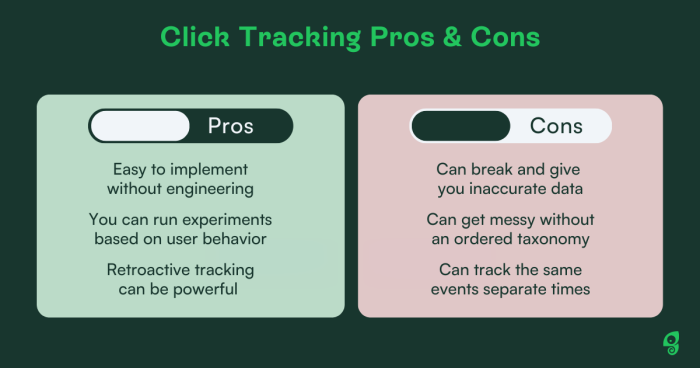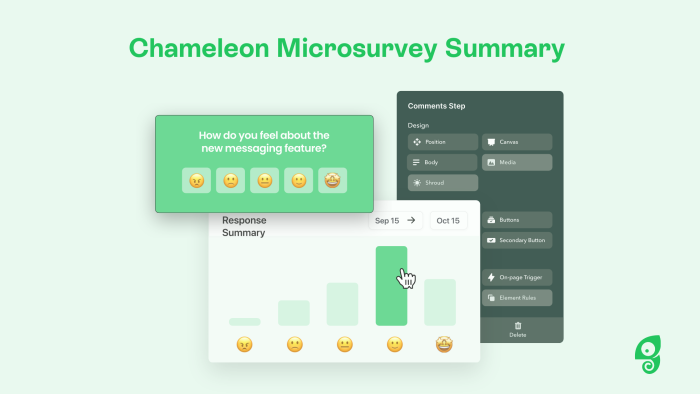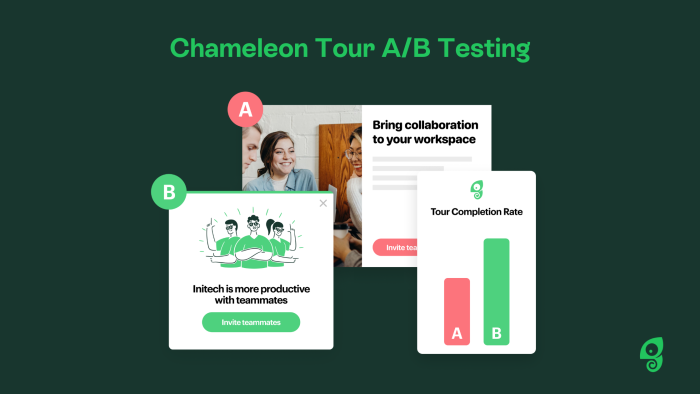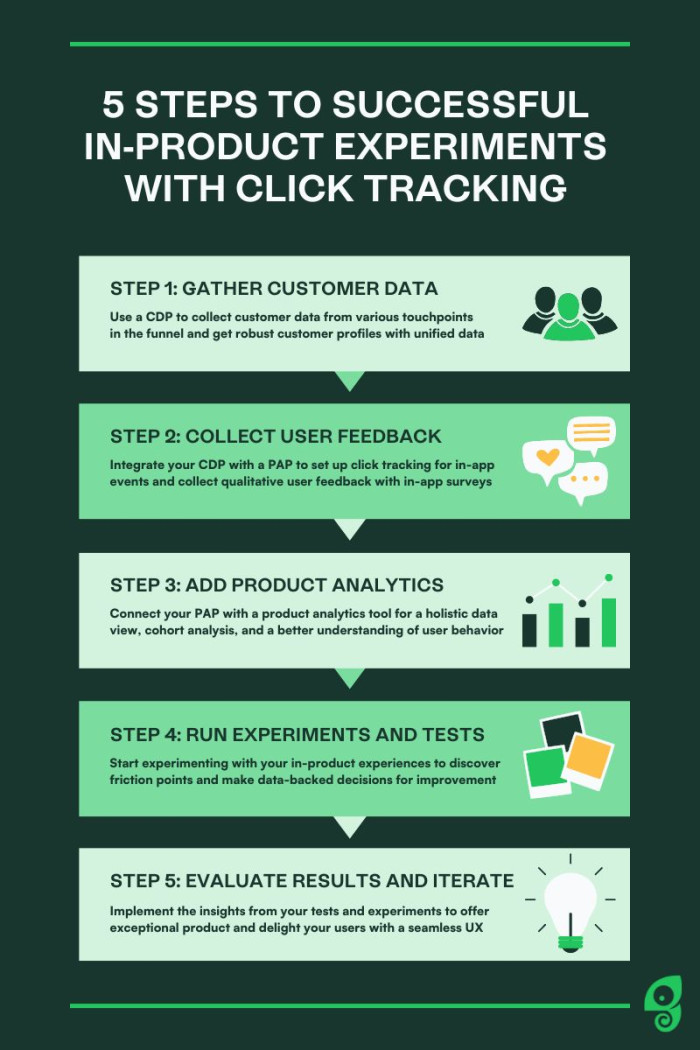Product data can get really messy, really fast – and in the era of product-led growth (PLG), this can make or break your growth goals. Your growth strategy needs clean and accurate product data to run experiments, trigger campaigns, identify opportunities for improvement, and so much more.
But there's a shortcut, and that's click tracking. Click tracking helps you instrument product activity by using a visual point-and-click method to identify elements on a page to track clicks on, instead of requiring code-level changes for tracking.
With expert contributors from Mixpanel, Segment, Heap, and Freshpaint, we’re here to help you understand what click tracking is, how to prepare an effective plan if you’re just starting out with event and product analytics, and how to run data-backed experiments in your product to get to results quickly.
Click tracking helps you set up the stage for event tracking, but it has its pros and cons. If you’re going to use it, choose best-in-class tools that are built around that specific purpose and have a core focus on it.
For the best results, integrate and combine data from Customer Data Platforms (CDPs), Product Adoption Platforms (PAPs), and product analytics tools.
If you’re just starting out with click tracking, first make sure to have an effective event tracking plan and your whole company aligned on it.
If you already have this sorted out, you can jump straight to the section with five steps to run in-product experiments with click tracking.
We’ll explain how to:
Collect, segment, and analyze customer data with CDPs
Gather qualitative user feedback with PAPs
Uncover more insights with product analytics
Run data-backed experiments in product
Evaluate results and improve the user experience
By the end of this article, you’ll learn how click tracking can help you get the answers to the questions you care about and start increasing activation, engagement, and adoption rates.
Plus, there's a visual summary of the five steps we've covered here. Share it with your team, and let the experiments guide your way to success!
What is click tracking?
Click tracking refers to identifying and tracking user clicks in your web app via a visual point-and-select tool that doesn’t need code-level instrumentation.
In other words, by using a visual element selector, you can easily pick elements that you want to track users’ actions on. And the best part – you don’t have to write a single line of code to set the tracking in motion.
To avoid any confusion, even though it has “click” in its name, click tracking isn’t only about clicks. It enables you to track all other user actions like hovers, form field inputs, forms filled, and more. These actions are called events.
When you start tracking said events, you’ll be able to see an activity log of actions your users take while interacting with your product. You can then analyze their behavior and improve the user experience where needed.
With event tracking in place, you will track:
Events: They show you that something has happened. Typically, events include the type of element, the name of the element, and the action the user took. Examples of events are “button clicked”, “feedback submitted”, “tour started”, “onboarding completed”, etc.
Event properties: These are the attributes of the tracked actions and they show you the context in which something has happened. Event properties typically include details like time, duration, count, device, software version, element characteristics, etc.
User/Company properties: These are the properties related to a specific user or a company/account. They typically represent more static values or states such as: “user ID”, “first name”, “email address”, ”company name”, “account plan”, etc.
The purpose of event tracking is to use data analytics to get the answers to the questions you care about. Some questions we often see our customers asking are:
How many people are completing our onboarding flows?
How quickly do users activate their accounts?
How many new signups do we have per month?
What is the percentage of trial-to-paid conversions?
Where is the biggest drop-off during the user onboarding?
Tracking events is useful if you want to capture the moment when something has happened and understand what’s changed. Or, in the customer lifecycle funnel, you can use events to understand where things are breaking down, why people are churning, or how big of an impact your product tours have on user activation rates.
This is where creating custom user segments is really helpful. You could then group segments that share the same characteristics into cohorts for analyzing their behavior and being more precise in targeting. We talked about this in our recent webinar with Userlist on how to use lifecycle segments to retain more users. Watch the webinar recording right here 👇
👀 How to use lifecycle segments to retain users
Not sure how to define event names and properties for the biggest impact? Find out in our webinar where Chameleon and Userlist joined forces to share pro tips on why user segmentation and event tracking are essential to product-led growth.
Two types of click tracking you can use
There are two types of tracking user actions within your product:
Precision tracking
Retroactive tracking
With precision tracking, you need pre-defined events in your product’s codebase to start tracking. The more event types and properties you add, the more data you’ll get.
With retroactive tracking, the events will be automatically tracked in the background and you’ll be able to surface them and access historical data when you need it.
Here’s how Michael Malis, Founder of Freshpaint, explains the difference.

You probably have a good sense of what you want to measure right now. But from my experience, those initial insights create even more questions. With precision tracking platforms, you'll get the data from new events only after you add them. By using a retroactive event tracking tool, you'll get a historical view of any event once you add it. The benefit is that you'll be able to answer the inevitable next question right away.
Pros and cons of click tracking
Click tracking has its pros and cons, so let’s take a closer look at these.
Pros
You can easily implement click tracking without engineering
It allows you to trigger in-product experiences based on user behavior
You can see what users are doing and start running experiments for the improvement
Retroactive tracking can be powerful as you don’t have to decide at the beginning what you want to track
Cons
It can break and give you inaccurate data
It can get really messy without ordered taxonomy
It can track the same events at separate times giving disjointed data

The best way to avoid getting wrong or messy data is to clearly define what you want to track and get your whole team on the same page with data taxonomy and naming conventions.
💡 Data taxonomy refers to hierarchical classifications and naming conventions for data categories and sub-categories. Having an ordered taxonomy helps you standardize terminology and jargon across your organization.
The biggest mistakes teams make with click tracking (and how to avoid them)
Speaking of naming conventions, one of the biggest challenges with event tracking is to get everyone in the company on the same page regarding data taxonomy. Another challenge is to keep it consistent.
Let’s look more into common mistakes and how to avoid them.
Mistake #1: Not having a consistent naming convention
Failing to establish a consistent naming convention for events and properties is what Geoffrey Keating, Senior Manager of Content Marketing at Segment, points out as one of the biggest mistakes that organizations make.

Similar to style guides in programming, a consistent naming convention will make it super easy to jump in later and understand exactly what event you're tracking. For example, without a consistent naming convention, your teammates will be left guessing which event actually corresponds to a user signing up for your newsletter. This may not seem like a big deal, but imagine how confusing this will become as your company grows over time.
To avoid getting into this situation and enable your company to use data the right way, Geoffrey emphasizes two simple things you can do today:
Align on a framework for naming your events and properties
Put a process in place to enforce your company's framework

Our main recommendation is to pick a naming convention and stick with it! At Twilio Segment, we’ve adopted the object-action framework. Our success team developed it after working with thousands of customers on their analytics setup.
You can learn more about the object-action framework that Segment's team is using or set a different naming convention that works best for you. As Geoffrey concludes, aligning on a framework and having a process in place will bring consistency, convenience, and clarity to your data and the decisions you make with it.
Mistake #2: Not being specific enough with naming conventions
Another common mistake with naming conventions is not being specific enough.
To create an effective, ordered data taxonomy, Michael Malis advises getting clear on company-wide definitions for key customer events and being as specific as possible.

I see many teams talk about ‘signup’ and ‘conversion’ without getting specific. Conversion from what to what? Does signup happen at email submission or account creation? What constitutes an active vs. inactive customer? Generally, digging into these gaps results in huge gains for growth teams and cleaner data.
Michael continues with advice on how to avoid making this mistake. As he explains, the most critical thing is that you write the names down and communicate them to the entire company.

Something as simple as a Google Sheet with the event name, type, and description is usually sufficient. The real challenge comes when you need to make changes or updates to this structure. The naming convention for precision tracking only tools are literally in the code, so any changes will require engineering resources. New platforms like Freshpaint are more dynamic, so the changes you make can be as simple as changing the name in the UI.
With well-structured taxonomy, all data inputs and outputs from your attribution platform will be unified and easily understood by everyone on your team. It will also help you ensure that analysis and insights are aligned with your goals.
For the best results, use best-in-class tools
First, let’s briefly go through what makes a tool “best-in-class”:
It’s robust and reliable – it won’t go away in the future
It’s focused on developing a product for a specific purpose
It offers deep integrations with a wide range of tools
To get the most out of event tracking, you’ll need to collect and segment customer data, start tracking user actions, gather both quantitative and qualitative feedback, analyze in-product behavior, run experiments for improvement, and act upon the insights.
Of course, there are tools that can help you accomplish this:
Customer Data Platforms (CDPs) like Segment, Freshpaint, Iteratively, and RudderStack
Product Adoption Platforms (PAPs) like Chameleon, Pendo, Appcues, and WalkMe
Product Analytics tools like Mixpanel, Heap, Amplitude, and InnerTrends
We recommend using tools built for each specific purpose and integrating the robust data across platforms, as opposed to using one tool with add-ons that often have limitations and not-so-effective functionalities.
Now, let’s get into the nitty-gritty details of how to implement tracking into the flow of continuous improvement for your product success.
5 steps to successful in-product experiments with click tracking
We already touched upon the flow of collecting customer data, tracking events, analyzing, and experimenting. Here’s a step-by-step guide.
1. Start with customer data: Collect, segment, and analyze with CDPs
Customer Data Platforms (CDPs) collect customer data from multiple touchpoints and gather the information into unique customer profiles.
Here's how Geoffrey Keating from Segment explains the mechanics of customer data tracking.

Data tracking is the process of collecting, identifying, and categorizing individual data points throughout the data pipeline. It encompasses the tools that companies use to organize their data, as well as the ethical framework they use to protect user privacy and security.
With a CDP, you’ll have a comprehensive database that can serve as the foundation of your audience segmentation, behavioral analytics, and customer communication initiatives.
But tracking anything and everything can lead to a low signal-to-noise ratio. That’s why it’s crucial for you to understand what exactly you want to track and make a plan for it, especially if you’re just starting out.
Depending on the type of tracking that you use, your tracking plan might look different.
If you’re using precision tracking…
Geoffrey points out that the most successful teams start by creating a tracking plan as a central list of events that can grow and change alongside the company.
"This central list will provide a consistent roadmap for what data is important, where it’s being tracked, and why. To help you get started, our team has developed sample tracking plans for a variety of industries and use cases. In the end, your tracking plan can help you create an airtight process for scaling data collection as your business grows."
– Geoffrey Keating, Senior Manager of Content Marketing at Segment
Creating a tracking plan is not an easy task, though. It requires input from every team that touches your data. As Geoffrey puts it, this process of collaboration forces your business to think of analytics as a team sport, where everyone agrees to play within a certain set of guidelines and work together toward a shared goal.

This will help ensure your business uses higher-quality data, gains alignment across teams, and establishes a framework for consistent growth.
If you’re using retroactive tracking…
If you use a tool that offers retroactive tracking – the platform will auto-track everything behind the scenes and you will see historical data when you think it’s relevant – it’s good to know that there’s been a shift in tracking plan best practices.
Michael Malis from Freshpaint explains how this shift happened.

I feel like we've come full circle. Initially, teams tried to track everything to avoid missing out on valuable data. But that just created too much noise in data analytics tools which caused best practices to shift. The popular opinion has been to be careful about understanding what questions we wanted to answer to narrow down the unique events being tracked. What we've really been craving is the ability to track anything while still being selective about what we want to analyze.
Either way, a CDP can save you time
Regardless of the tracking type, using a CDP can save you time, especially if you’re just starting out with the event analytics – it will enable you to scale more easily as you grow.
Here's how Vijay Jayaram, Director of Product at Mixpanel, sees it.

If you're just starting out, consider using a CDP to save time and maintain data trust across platforms as you grow. While point-to-point integrations are generally quick and easy to set up, as you scale, centralized data sources tend to be easier to debug and maintain.
To go beyond and scale, you can integrate a CDP with a Product Adoption Platform and a product analytics tool. The tracked data will be visible across tools, so you can quickly gain results and relevant feedback.
2. Continue with user feedback: Gain relevant qualitative data with in-app surveys
A CDP will provide you with robust customer profiles and data sets on interaction with your product. But that’s just the beginning.
Your next step is to include qualitative research and start collecting user feedback by directly asking them about their experience, pain points, and issues within your product that you need to address.
The best way to do this is by integrating your CDP with a Product Adoption Platform (PAP) to add another layer of interaction with your users and get more relevant insights.
💡 Product Adoption Platforms add a seamless layer over your SaaS product to make it more personalized and contextual for each user. You can use a variety of patterns, such as modals, highlights, nudges, walkthroughs, and more, to gather contextual feedback, onboard new users, introduce new features, and promote a healthy dose of self-serve support.
For example, you can use Chameleon as a Product Adoption Platform to run on-brand Microsurveys with custom questions, triggered at the right time for a specific user segment, to understand friction points and improve your product.
With Chameleon, you can easily customize the style of your product surveys, add custom segments to target the right users, and set up the next steps by triggering a different action with the survey buttons (e.g. to load another page, start a product tour, link to a help doc, etc.).
Whether you want to run a multi-button survey with customizable options or an input survey to ask a single question and collect text responses, a visual point-and-click element selection will help you quickly choose and configure the element rules for click tracking.
In the example below, you can see how this can be done with Chameleon’s visual element configuration.
And here’s a mock-up example of a survey configuration and response summary.

All of your survey responses – along with event analytics around the display and completion – will automatically be collected and available in the Chameleon Dashboard, and also directly visible in your connected product analytics tools.
This leads us to the next step – product analytics.
3. Uncover insights with product analytics: Know what, where, and how to track
When you gather both quantitative and qualitative customer feedback, it’s time to dig into product analytics to discover valuable insights from users’ actions.
For example, you can uncover onboarding drop-off points, measure signup-to-trial or trial-to-paid conversion rates, track in-app messaging performance, and more.
By integrating your existing data with a sophisticated product analytics tool, you can run cohort analysis, build robust event tracking reports, and find more opportunities for improvement.
But if you’re just starting out, how do you decide what to track?
How to start with product analytics
Connie Yuan, Senior Product Manager at Heap, suggests that you start by understanding what’s happening across your product or website.

This helps with two things: 1) Getting context on what users are doing on certain pages (e.g. What actions are they taking? Where are they spending time?), and 2) Getting familiar with the product analytics tool and building confidence looking at the data.
Because Heap automatically captures key events on a page, Connie points out that you don’t have to decide when and where to track to get started.
"Simply identify pages you’re interested in exploring and see the top actions customers are taking on that page. Understand what customers are really doing and whether it aligns with your assumption.”
– Connie Yuan, Senior Product Manager at Heap
Vijay Jayaram, Director of Product at Mixpanel, also shares advice on how to get started with product analytics. Her advice: “Start small – focus on tracking a small number of events that are critical to your product”.
As she explains, for the majority of products, this will include tracking two main events:
1) Sign Up event: This is the event where a user makes themselves known to your product by "creating an account".

I recommend tracking Sign Up because it's a quick and easy way to get real insights on your product's growth. It lets you answer simple but key questions like: What is our growth? How many people are signing up on our website (daily, monthly, etc.)?
2) Value Moment event: A key user action that indicates that a user is able to generate or realize the value in your product, and is often a strong predictor of healthy user engagement and retention.

Tracking a Value Moment can help answer questions like: What does active engagement look like? How many users are experiencing value in our product? What is our retention? How many people are coming back to realize the value of our product? What is our activation rate? How many people who sign up make it to the Value Moment?
As she concludes, the Value Moment event should be tailored to your specific product. So, for example, a social product will have “creating a post” as a value moment, a streaming platform will track “completing a TV series”, while an eCommerce site could be focused on tracking the “purchase completion”.
How to extract insights from data
Tracking and analyzing data is one side of the coin. On the other side, you need to extract meaningful insights you can act upon. What’s the best way to do it?
Here’s what Connie Yuan thinks.

I find that familiarity with the data naturally leads to finding actionable insights. For example, if you’re noticing that a large percentage of users are experiencing friction or spending a lot of time on one step of a journey, you’ll naturally dig into the why and experiment with different solutions to see if it fixes the issue.
Depending on the tool you use, you can extract more insights using specific features.
For example, as Connie suggests, with Heap you can uncover hidden friction and opportunities with Heap Illuminate, use Journey Maps to compare user paths leading to the same goal, or understand the difficulty users face when moving their journey with a feature called Effort Analysis that provides the “first-ever quantitative measurement of user friction”.
With relevant data and insights, you’ll be able to better understand user behavior, find problematic areas you want to improve, and decide on experiments you want to run.
4. Pave your way to success: Run data-backed experiments in product
Continuous experimentation and improvement are especially important for product-led companies or teams that work in Lean and Agile environments and want to quickly build, measure, and learn.
After running 700 experiments per week, Airbnb’s Growth team has summarized four key principles that make experimentation count:
Product experimentation should be hypothesis-driven (not feature-driven)
Defining the proper ‘exposed population’ is paramount
It’s essential to understand the impact of the change
Failure is an opportunity
In other words: Experiments don’t fail – hypotheses are proven wrong.
The more data-backed experiments you run, the better you’ll understand your users.
To run your experiments in-product, look at the events data at hand, identify where the problems are, define the hypotheses, and configure the experiments within your product adoption tool.
For example, let’s say that your data shows there’s a significant drop-off during the onboarding flow. You can experiment with different onboarding tours to try to change that.
You could set out two different tours for this experiment. These can be with shorter or longer copy, with or without media, with one step or multiple steps, with or without links to help docs, or with any other difference that will help you test your hypothesis with A/B testing.
You can do this with Chameleon and benefit from advanced features like granular user segmentation and scheduling. Here’s a mock-up example of what this could look like.

Once you get the results of how both tours performed, you can integrate data across your tools to uncover patterns and quickly iterate as needed.
Connie Yuan believes that it’s important for any product owner who wants to deliver meaningful user experiences to integrate their product analytics tools with other tools in their stack to increase user engagement.
As she explains, you can integrate analytics with platforms for in-app messaging, marketing automation tools for email, and other messaging channels, so that you can launch flows that help users get to the value in your product at the right time.

With a deep integration between product analytics and customer engagement tools, you can also experiment with different messaging, designs, and timing to then measure whether your experiments are making a difference in converting users!
5. Evaluate experiment results and iterate: How can you improve?
When you get your experiments up and running, your next step is to track user actions and asses the performance to validate your assumptions and measure the experiments’ impact.
You can track real-time performance and iterate as you go, or set a specific time period after which you will evaluate the results and find ways to improve.
In our previous example of A/B testing onboarding tours, you could track when someone starts the tour, completes the tour, dismisses the tour, delays the tour, clicks the link/button within the tour step, and much more.
If made with Chameleon, you could then see the results of your tour performance within the Chameleon Dashboard. Here’s an example of what it could look like.
From there, you could download a CSV of all events to analyze, or send data to other tools for a more holistic view. This is where sophisticated, two-way integrations with analytics tools come in handy.
The data that Chameleon sends to integrated tools include:
Event type (e.g. “Tour started”, “Step seen”, etc.)
Event properties (e.g. “Tour name”, “Step number”, etc.)
Default user properties (e.g. browser, language, etc.)
User properties (e.g. “User ID” – the same ID across platforms)
In addition, you can send any other custom properties to your connected integrations as part of these events.
This is helpful if you want to further analyze data. You can then use your analytics tool to visualize data with charts, funnels, boards, and various types of reports to help you assess the overall performance.
Leverage Chameleon’s two-way integrations
You can integrate Chameleon with Mixpanel, Segment, Heap, Freshpaint, and other tools. Connect your tech stack, start tracking events and the performance of your in-product experiences, and get a complete overview of user behavior.
A wrap-up on click tracking (and a visual summary)
We covered a lot here, so let’s briefly wrap up with a few key takeaways on click tracking.
Click tracking is a simple point-and-select method that lets you choose which elements you want to start tracking events on. It doesn’t require any coding so it can save you both time and resources. When you use a tool specifically built around this purpose, you can quickly set event tracking in motion.
By tracking and analyzing user actions across various touchpoints throughout your customer journeys and in-product interactions, you’ll be able to understand your users better, measure the success of your in-product experiences, and gain clear insights on how to increase product adoption rates.
If you’re just starting out with click tracking and event analytics, make sure to create a tracking plan, get your whole organization on the same page with data taxonomy and naming conventions, and choose the best-in-class tools to help you get to the results more quickly.
And to finish, here’s a visual summary of the five actionable steps you can take to run successful in-product experiments, uncover friction points, and use insights as your compass to product success.

Experiment, learn, and iterate – without code
Create on-brand Tours, Tooltips, Launchers, and Microsurveys, experiment with A/B tests and custom user segments, use behavioral analytics to gain actionable insights, and get to results quickly. Start for free in our sandbox environment or book a personalized demo with our product experts.



